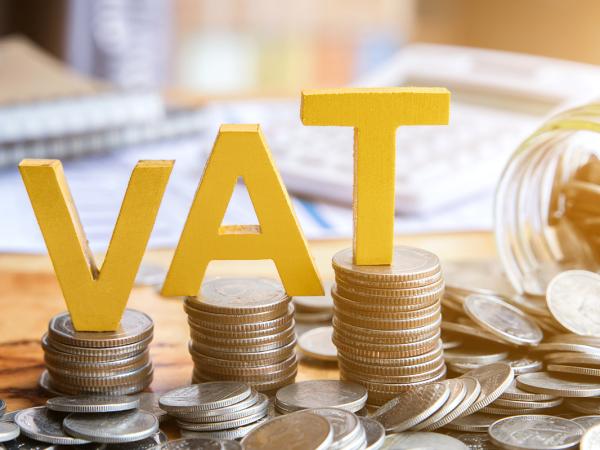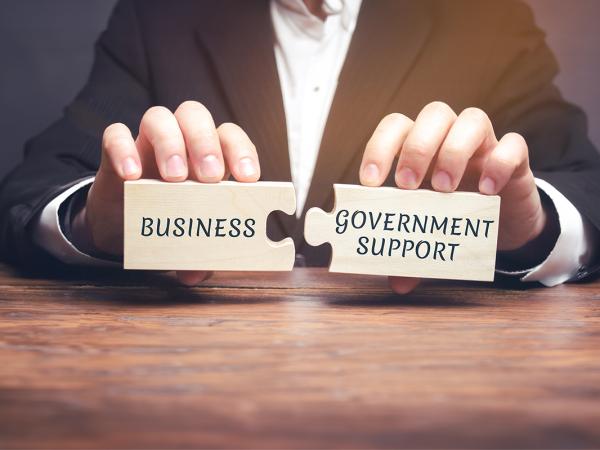Disabled/older people's VAT reliefs
There is no general relief from VAT for people who are disabled or chronically ill. However, a zero rate can be applied to certain supplies to disabled people for their domestic or personal use – that means, no VAT is charged. People aged 60 or over may also be eligible for some VAT reliefs.

Content on this page:
Introduction
Under VAT law, the VAT is regarded as being included in the price of goods or services unless otherwise stated.
Sometimes you automatically benefit where no VAT or a zero rate of VAT is charged on certain items – for example, basic foods. But VAT reliefs can also be available on other goods and services if you can identify that you are entitled.
The two main types of reliefs from VAT that we will look at here are zero rates and reduced rates.
Zero rate
A zero rate can be applied to certain supplies to disabled people for their domestic or personal use – that means, no VAT is charged.
Supplies (for example, goods and services) on which you do not have to pay VAT are often referred to as ‘zero-rated’ or ‘VAT-free’ or ‘eligible for VAT relief’.
Since VAT was introduced in the UK in 1973, successive governments have recognised that disabled people should not have to bear all of the extra VAT costs which they could incur in meeting their needs. However, the rules about VAT reliefs for disabled people are complex. Not everything that is supplied to disabled people is zero-rated for VAT. Both the product and the disability have to qualify.
Most zero rates can apply if a responsible person (for example, spouse, parent, guardian, trustee) represents the disabled person when buying and paying for the goods and services, provided the other conditions are met. This means that the relief can apply if you are the carer of a disabled child and are catering for their needs. Similarly, you could buy a gift for a disabled child that qualified for a VAT zero rate. If the disabled person is a child, or is unable to write, a representative, doctor or health professional would also be able to make the purchase and secure zero rating where all other conditions are met.
Reduced rates
A reduced rate (currently 5%) can be applied to certain mobility aids installed in the homes of people aged 60 and over, who are not disabled and therefore not entitled to the zero rate. See the heading below: VAT relief for people aged over 60, but not disabled.
The definition of disability
VAT law provides certain reliefs for people who are ‘chronically sick or disabled’.
‘Chronically sick or disabled’ is expanded in HMRC guidance (at para 3.2) as a person:
- with a physical or mental impairment that has a long-term and substantial adverse effect upon their ability to carry out everyday activities;
- with a condition that the medical profession treats as a chronic sickness, such as diabetes; or
- who is terminally ill.
You will not qualify if you are only temporarily disabled or incapacitated, such as suffering from a broken leg or other temporary injury. You also will not qualify if you are elderly but are otherwise able-bodied and do not suffer any chronic conditions. However, if you are over 60, you may only have to pay a reduced rate of VAT (5%) if you have certain mobility aids installed in your home. See ‘VAT relief for people aged over 60, but not disabled’ below for more information.
The severity of some conditions such as back pain, psoriasis, dyslexia and asthma varies – some sufferers will not be regarded as disabled by the conditions whilst others will be. Where your condition has a substantial long-term, adverse effect on your ability to carry out normal day-to-day activities, then you should be treated as disabled for VAT purposes.
You do not need to receive state benefits to prove that you are disabled, but receipt of certain benefits is likely to be enough to prove that you are disabled.
Remember: disability – on its own – is not enough to zero-rate a supply. The other conditions must be met too, for example with regard to personal or domestic use.
Personal or domestic use
The goods and services that you are buying have to be for your personal or domestic use. HMRC’s guidance (at paragraph 3.4) advises that this does not include use for business purposes. The legislation does not actually define personal use so it may be that some business use should not preclude relief. You should be aware, though, that HMRC could challenge any claim that such goods or services were purchased for personal or domestic use.
The goods or services must be just for your own use, not for use by anyone else. However, if you and your partner are both chronically sick or disabled and buy qualifying goods and services for both of you to use, then you will not have to pay VAT.
Zero-rated items
Below we give examples of items which can be free of VAT for disabled people.
Cars (including light vans and motorhomes)
VAT relief can be available if:
- you lease a car from the charity Motability or directly purchase a car previously hired under the scheme
- you usually use a wheelchair for mobility and you hire, lease or purchase a car which has either been designed or substantially and permanently adapted (which typically requires welding or bolting) so that you can get into it, travel as a passenger, or drive it. Note that to purchase the car itself without VAT, the car has to be adapted when you purchase it – you cannot buy the car with VAT zero-rating and then have it adapted. If you were to buy a new car then have it adapted, you would have to pay VAT on the car and only the cost of the adaptations would be zero-rated for VAT.
Again, the car must be for domestic or personal use. This is normal everyday use such as going to the shops, taking the children to school, travelling to and from college, and so forth. It also includes incidental use at work, providing the main use remains as a private vehicle. It does not include business use – for example using the vehicle to deliver goods sold by a business.
The following do not qualify as substantial and permanent adaptations:
- the fitting of a standard roof rack or standard roof box;
- the attachment of a trailer to the back of a vehicle;
- the fitting of automatic transmission; or
- the fitting of parking/reversing sensors
This is because the above are for general use and not specifically designed for disabled people. This is not an exhaustive list, however HMRC have a helpsheet for customers about purchasing zero-rated adapted vehicles which provides more information.
Since April 2017, VAT relief on substantially and permanently adapted motor vehicles for disabled wheelchair users is limited to one adapted motor vehicle in any three-year period, unless there are exceptional circumstances such as if a vehicle is stolen or written off, or if the vehicle has ceased to be suitable for the disabled person’s use because of changes in the person’s condition.
The three-year rule only applies where the car you want to replace was purchased on or after 1 April 2017.
HMRC’s guidance on purchasing zero-rated adapted vehicles explains the three-year rule and the procedures for claiming the VAT relief. It also clarifies that lower limb amputees are entitled to relief. The form for claiming the relief can be found on GOV.UK.
Alterations to your home
There is no general VAT relief on building modifications for disabled people. However, some specific building works (including materials connected to the work, preparatory work and making good the immediate area) to adapt a private* residence (including garden, granny annexe or similar and second home or holiday home) because of your disability can qualify, including:
- constructing ramps or widening doorways or passages to help getting in and out of a home or move around inside it
- installing, extending or adapting a bathroom, shower room, washroom or lavatory where the work is necessary to suit the condition of the disabled person
- installing a lift – such as a stair lift or chair lift – that is designed for use in connection with a wheelchair
- installing an alarm system so you can call for assistance.
(* ‘private’ in this context does not require ownership or sole occupation. The relief applies provided that you live in it. For example, you would qualify if you live with your family.)
Unfortunately, some things which you might think should qualify do not, such as:
- constructing new doorways or passages
- installing, extending or adapting a downstairs bedroom
- alterations to accommodate special medical equipment (the equipment itself might qualify for relief, but the alterations to your home do not)
- materials from building merchants in connection with works performed by a family or friend for free or in a do-it-yourself capacity.
One area that gives rise to difficulty is kitchens. You can only get VAT relief on equipment designed specifically to suit disability, for example, a bespoke knee space hob unit specially made for a wheelchair user to sit at it (however the hob appliance itself would not qualify). Relief is not available on general purpose equipment even though it does, in fact, alleviate disability.
For example, a mass-produced corner carousel in a kitchen may make things easier for a person with MS suffering with fatigue or lack of energy, but it is also a convenience for able-bodied people and a better means of utilising space. Although it is undoubtedly of use to the person with MS, it has been designed for general use and not specifically for a disabled person.
More detail about building and construction works can be found on GOV.UK.
Other equipment
A range of goods and services (bought or leased) might be free of VAT if they are specially designed to help with a disability. Examples include:
- wheelchairs and carriages (including most mobility scooters)
- medical or surgical appliances – like pacemakers, artificial respirators, artificial limbs or leg braces, (but plasters, bandages, and so on do not qualify as they are not appliances)
- electrically or mechanically adjustable beds (must be akin to beds commonly used in hospital wards)
- commode chairs, stools and other similar devices to aid with bathing
- chair and stair lifts for wheelchairs
- computer software designed specifically for disabled people, for example to overcome communication problems
- hoists and other lifting equipment including lift and tilt or riser chairs
- emergency alarm call systems of the type that link you to a specified person or a central control centre
- low-vision aids (magnifying equipment, and so on) but not spectacles or contact lenses
- Braille embossers and other similar equipment, such as a braille keyboard
- gadgets and devices that are designed solely to make everyday tasks easier for disabled people, like kettle tippers and long-handled pick-up sticks
- text telephones, but not hearing aids (unless for the auditory training of deaf children)
- incontinence products
- specialist clothing, footwear and wigs (but not dentures).
You might also be able to get VAT relief on:
- the cost of installing some of the items in the list above
- the cost of adapting general-purpose goods to suit your particular needs (including any materials needed to adapt the goods but not the cost of the goods themselves)
- repair and maintenance costs of qualifying goods such as those listed above
- parts and accessories designed solely to go with qualifying items (for example, a generator purchased to run a stair lift if there is a power cut does not qualify because it is a general-purpose item that could have other uses).
Imports
In general terms, if goods qualify for relief when purchased from a UK supplier, they will also qualify for relief when imported by the person with a disability. You can find more information in HMRC’s VAT Notice 701/7.
Other goods and appliances that qualify for zero rating
The VAT relief depends upon the purpose for which the goods were designed.
They must be designed solely for use by disabled people – this is very narrow – it is not sufficient for the zero-rating that the equipment or appliance is designed mainly for or destined or intended for use by a disabled person, or is mainly purchased by disabled persons. The only exceptions are commodes and other items to enable easier use of toilet facilities – these are always zero-rated when supplied to a disabled person or eligible charity for personal use.
Therefore, whether other goods and appliances qualify for zero-rating will depend on what the manufacturer or designer set out to achieve – there may have been patent applications or clinical trials, for example, and they (the manufacturer or designer) are responsible for confirming the VAT liability of their products and should advise distributors and retailers of the product's VAT status. This means that in most cases, the product should be on sale with the same VAT liability status across the board and there should be no need to shop around to obtain the VAT relief (however, there may be other reasons to compare prices, such as delivery charges, etc.).
If the manufacturer or designer makes no such claim for the goods, or if there is any doubt on this question, they can apply to HMRC for a ruling. Only in exceptional cases, where the manufacturer or designer is not prepared to take up the matter with the VAT office, should a retailer or purchaser ask for help and guidance from HMRC.
HMRC have been asked questions about (amongst other things) air purification products, allergy products, asthma products, batteries, recliner chairs, hay fever products, hydrotherapy pools, mattresses, pain relief equipment, spa baths and walk-in baths. You can find more information in HMRC's internal manual VAT Relief for Disabled People.
Note, the distinction between buying goods and appliances and using the services of a therapist. For example, if you are buying a hydrotherapy pool, HMRC say in some circumstances it can qualify for zero rate relief. If you are using the services of a hydrotherapist, then the VAT treatment is more complex. It seems from this guidance, that their services may not be exempt from VAT.
VAT relief for people aged over 60, but not disabled
Certain mobility aids can be installed in the private home (or a home shared with friends and relations) of someone aged 60 or over at a reduced VAT rate of 5%. These are:
- grab rails
- ramps
- stair lifts
- bath lifts
- built-in shower seats or showers containing built-in shower seats
- walk-in baths with sealable doors.
Note that the relief is only available where the items are supplied and installed together – you cannot purchase the items separately at the reduced rate and install them yourself. You also will not get the reduced rate if you have to pay for any repairs or replacements of an existing installation.
If you are aged 60 or over and also disabled, you might get the full VAT relief where it is available rather than just the reduced rate. Where your physical condition is so impaired on account of age that you cannot get about without a wheelchair or a walking aid, you may be said to be disabled.
The person who uses and benefits from the goods must be 60 or over at the time when the supply and installation takes place. It does not matter, though, who actually orders and pays for the work.
Also, you will not get the reduced rate on general adaptations carried out in your home, such as widening passageways and so forth.
More information about mobility aids for older people can be found on GOV.UK.
How to claim the elderly and disabled VAT reliefs
You do not have to pay the full price to the seller and then reclaim the VAT from the government later. Instead, the supplier should sell you the goods or services with the VAT already discounted. If you suspect that a product or service is zero- or 5%-rated, ask the supplier and they should be able to tell you.
You will probably have to sign a form declaring your illness or disability or that you are aged 60 or over. The supplier should have copies of this form. If not, you can direct them to look on GOV.UK for a sample eligibility declaration form.
If you are shopping online, the supplier or manufacturer should have an online declaration, which you can fill in as you make your purchase. If you are unable to complete a declaration yourself, HMRC guidance confirms that a relative, partner or other responsible person, for example your doctor, can do so on your behalf.
There are penalties for making a false declaration and for fraudulent VAT evasion.
With regard to incontinence products – in practice these are zero-rated on the shelf in a retail setting and you will not need to complete an eligibility declaration, as it is accepted that due to their specialist nature, only eligible individuals are likely to buy such products.
More information
If you have an enquiry, HMRC provide a help service onVAT reliefs for disabled and older people.
The GOV.UK website has a collection of VAT reliefs guidance and forms for disabled people and people over 60 including helpsheets on:
- VAT relief on the installation of certain mobility aids if you are 60 or over,
- VAT relief on building work if you have a disability and
- VAT relief on certain goods if you have a disability.
You can find information on zero-rated items on GOV.UK and in HMRC VAT Notice 701/7.



